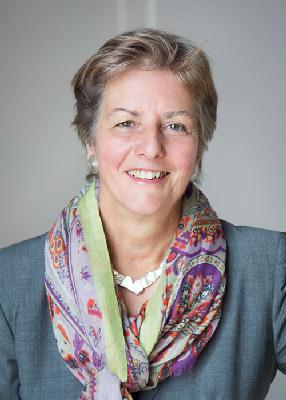Ludwig Hans Fischer

(Salzburg 1848–1915 Vienna)
“Die Riva schiavoni in Venedig”, according to title on the reverse in the artist’s own hand, signed, dated Ludwig Hans Fischer 1884, oil on canvas, 92 x 149.5 cm, framed, (W)
Ludwig Hans Fischer was born in Salzburg and completed his artistic education at Vienna’s Academy in 1869. He started at the general school of painting, then moved to the school of copper engraving under Louis Jacoby, before finally changing to the specialist school for landscape painting under the tutorship of Eduard Peithner von Lichtenfels. The first of his numerous extended voyages was made possible by a scholarship from Vienna’s Academy and led the young artist to Tunisia, Libya, Egypt, Palestine and Asia Minor in 1875. This was followed by a two-year study visit to Rome (1875-77) and then a trip to Norway. He also undertook further journeys (travelling to Tunis in 1878, and to Palestine and Egypt in 1879), as well as voyages through numerous Mediterranean countries, before he finally settled in his villa in Neuwaldegg (Vienna) in 1879, and set up a studio. This was followed by lively participation in exhibitions and the publication of a travel cycle “Aus dem Süden” [From the South] with H. O. Miethke, featuring twenty etchings from the Mediterranean region. Fischer became enthusiastic about Orientalist painting at an early age and was commissioned to create eight murals displaying Oriental motifs for the mezzanine rooms of the Natural History Museum in Vienna. In 1885, he became one of the founding members of the watercolourist club affiliated with the Vienna Künstlerhaus. In 1889/90, he accompanied the Viennese patron of the arts Count Karl von Lanckoronski on his trip to East Asia, as his artistic companion. This enabled him to get to know the coast and the interior of Ceylon (Sri Lanka) and produce drawings and watercolours to record his impressions of India, as he travelled to Lahore via Bombay. After this extensive journey, he showed the pictures in an exhibition at the Museum of Art and Industry. The pen drawings are finished off in watercolour, for the most part, and provide a succinct impression of the landscape’s distinctive features. His entire life was marked by wanderlust: he travelled through Upper Egypt to Wadi Halfa in 1897 and undertook his last major trip to southern Italy in 1904.
Fischer had a broad range of interests, and he also devoted himself to ethnographic and prehistoric research, which might have been encouraged by the state commissions from the Imperial and Royal Court Museums. He was also a member of the Vienna Anthropological Society, the Vienna Prehistoric Society (on behalf of which he led excavations), and a correspondent of the Imperial and Royal Vienna Central Commission for the Preservation of Monuments.
He is one of a number of nineteenth-century artists who set off for distant lands and sought new artistic challenges. The main field of his work was landscape painting, and he showed a penchant for motifs from the Orient. He strove to create realistic, lifelike images, with his paintings characterised by bright colours, precisely detailed drawing and rather small figures. This is also the case in the present lot, which depicts the Riva degli Schiavoni with a view of the Basilica Santa Maria della Salute and the Canale della Giudecca in the background.
Esperta: Dr. Christl Wolf
 Dr. Christl Wolf
Dr. Christl Wolf
+43-1-515 60-377
19c.paintings@dorotheum.at
23.10.2019 - 17:00
- Prezzo realizzato: **
-
EUR 62.800,-
- Stima:
-
EUR 30.000,- a EUR 40.000,-
Ludwig Hans Fischer
(Salzburg 1848–1915 Vienna)
“Die Riva schiavoni in Venedig”, according to title on the reverse in the artist’s own hand, signed, dated Ludwig Hans Fischer 1884, oil on canvas, 92 x 149.5 cm, framed, (W)
Ludwig Hans Fischer was born in Salzburg and completed his artistic education at Vienna’s Academy in 1869. He started at the general school of painting, then moved to the school of copper engraving under Louis Jacoby, before finally changing to the specialist school for landscape painting under the tutorship of Eduard Peithner von Lichtenfels. The first of his numerous extended voyages was made possible by a scholarship from Vienna’s Academy and led the young artist to Tunisia, Libya, Egypt, Palestine and Asia Minor in 1875. This was followed by a two-year study visit to Rome (1875-77) and then a trip to Norway. He also undertook further journeys (travelling to Tunis in 1878, and to Palestine and Egypt in 1879), as well as voyages through numerous Mediterranean countries, before he finally settled in his villa in Neuwaldegg (Vienna) in 1879, and set up a studio. This was followed by lively participation in exhibitions and the publication of a travel cycle “Aus dem Süden” [From the South] with H. O. Miethke, featuring twenty etchings from the Mediterranean region. Fischer became enthusiastic about Orientalist painting at an early age and was commissioned to create eight murals displaying Oriental motifs for the mezzanine rooms of the Natural History Museum in Vienna. In 1885, he became one of the founding members of the watercolourist club affiliated with the Vienna Künstlerhaus. In 1889/90, he accompanied the Viennese patron of the arts Count Karl von Lanckoronski on his trip to East Asia, as his artistic companion. This enabled him to get to know the coast and the interior of Ceylon (Sri Lanka) and produce drawings and watercolours to record his impressions of India, as he travelled to Lahore via Bombay. After this extensive journey, he showed the pictures in an exhibition at the Museum of Art and Industry. The pen drawings are finished off in watercolour, for the most part, and provide a succinct impression of the landscape’s distinctive features. His entire life was marked by wanderlust: he travelled through Upper Egypt to Wadi Halfa in 1897 and undertook his last major trip to southern Italy in 1904.
Fischer had a broad range of interests, and he also devoted himself to ethnographic and prehistoric research, which might have been encouraged by the state commissions from the Imperial and Royal Court Museums. He was also a member of the Vienna Anthropological Society, the Vienna Prehistoric Society (on behalf of which he led excavations), and a correspondent of the Imperial and Royal Vienna Central Commission for the Preservation of Monuments.
He is one of a number of nineteenth-century artists who set off for distant lands and sought new artistic challenges. The main field of his work was landscape painting, and he showed a penchant for motifs from the Orient. He strove to create realistic, lifelike images, with his paintings characterised by bright colours, precisely detailed drawing and rather small figures. This is also the case in the present lot, which depicts the Riva degli Schiavoni with a view of the Basilica Santa Maria della Salute and the Canale della Giudecca in the background.
Esperta: Dr. Christl Wolf
 Dr. Christl Wolf
Dr. Christl Wolf
+43-1-515 60-377
19c.paintings@dorotheum.at
|
Hotline dell'acquirente
lun-ven: 10.00 - 17.00
kundendienst@dorotheum.at +43 1 515 60 200 |
| Asta: | Dipinti dell’Ottocento |
| Tipo d'asta: | Asta in sala |
| Data: | 23.10.2019 - 17:00 |
| Luogo dell'asta: | Wien | Palais Dorotheum |
| Esposizione: | 12.10. - 23.10.2019 |
** Prezzo d’acquisto comprensivo dei diritti d’asta acquirente e IVA
Non è più possibile effettuare un ordine di acquisto su Internet. L'asta è in preparazione o è già stata eseguita.
Altri oggetti dell'artista
-

Stima:
EUR 1.800,- a EUR 2.200,- -

Prezzo di partenza:
EUR 240,- -

Prezzo di partenza:
EUR 160,-
